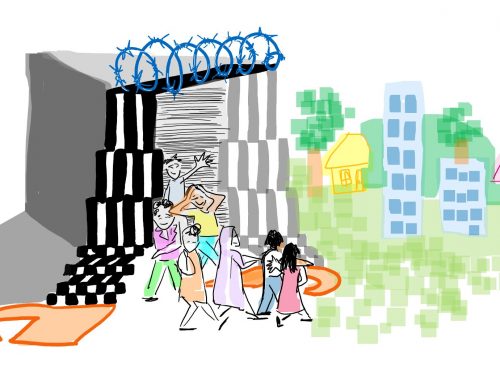The current Covid-19 crisis has prompted a lot of reflection among organisations like SDV that support and advocate for people affected by immigration detention. Ali McGinley in an earlier blog for Detention Forum discussed how the recent large scale releases from detention and the current low occupancy of the detention estate has allowed us to begin to imagine a world without detention. But the truth is that’s been on our minds for a rather longer time in Scotland.
The latest intelligence we have on numbers at Dungavel suggests that there are just 20 people detained there. The capacity of the centre is 125, reduced towards the end of last year from 249. In other words it is operating at just 16 per cent of its newly reduced capacity. However, the drop in numbers at Dungavel has not been nearly as dramatic as at other centres. The numbers have been low there for many months. In December 2019, according to government statistics, just 42 people were detained there. We have to go back more than two years to the end of the first quarter of 2018 to find more than 100 people detained at Dungavel, still less than half its capacity at the time.
In 2016 the UK Government attempted to close Dungavel and replace it with a short term holding facility at Glasgow airport. That plan failed as Renfrewshire council unexpectedly refused planning permission for the proposed new centre. Nevertheless, there is a sense that it is a centre that doesn’t quite fit. In his follow up review of vulnerable people in detention, Stephen Shaw called Dungavel ‘an incongruous part of the estate’ and expressed the view that the failure to close Dungavel had led to the paradoxical situation that there was more detention in Scotland than would have been the case had the centre closed. At the time, I was sceptical about this conclusion as I thought it failed to take sufficient account of people in Scotland at risk of detention who, with no detention centre in Scotland, would be moved to England if they were detained, farther away from their support networks and with more limited access to legal advice. But two years on, I think the situation has changed.
In addition to the continued low occupancy at Dungavel, community based alternatives to detention have been gaining increasing interest and support in Scotland, including from Government and from politicians from across the political spectrum. Last year, a parliamentary motion lodged by the SNP’s Fulton McGregor highlighted alternatives to detention and expressed the view that Scotland would be an ideal location for one of the Home Office’s pilot schemes. The motion received widespread support and later in the year, Aileen Campbell, the Cabinet Secretary for Communities and Local Government revealed, in answer to a Parliamentary Question from the Liberal Democrats’ Alex Cole-Hamilton, that Scottish Government ministers had on a number of occasions expressed their willingness to work with the Home Office on pilots. None had ever received a response. This is disappointing, but did not prevent the Scottish Government from restating its support for community based alternatives in its January 2020 paper, which set out its vision for migration policy.
SDV has long argued that Scotland is the ideal location community based alternatives to detention. It has a devolved parliament with wide powers, a separate legal system and a well developed migration voluntary sector able to carry out the work. In addition, some organisations are already working on projects that engage with people with immigration issues in similar ways to successful community based alternatives to detention. The Destitute Asylum Seeker Service (DASS) is led by the Refugee Survival Trust in partnership with Scottish Refugee Council, British Red Cross, University of Strathclyde Law Clinic, Glasgow Night Shelter,and Castlemilk Community Church. Using a model of holistic support, DASS offers casework, advocacy, legal advice and accommodation to address people’s needs and enable them to access their entitlements and make informed choices about their next steps. It is easy to see how such an approach could extended or adapted to cater for the needs of people at risk of detention.
In short, the conditions are all in place to end detention in Scotland: our only detention centre is virtually empty and has been for some time, our Government is convinced by the arguments for alternatives to detention, our politicians from all parties support alternatives, and we have a vibrant and skilled migration sector that is ready and able to do the work. Let’s make it happen.
Kate Alexander, Director, Scottish Detainee Visitors





